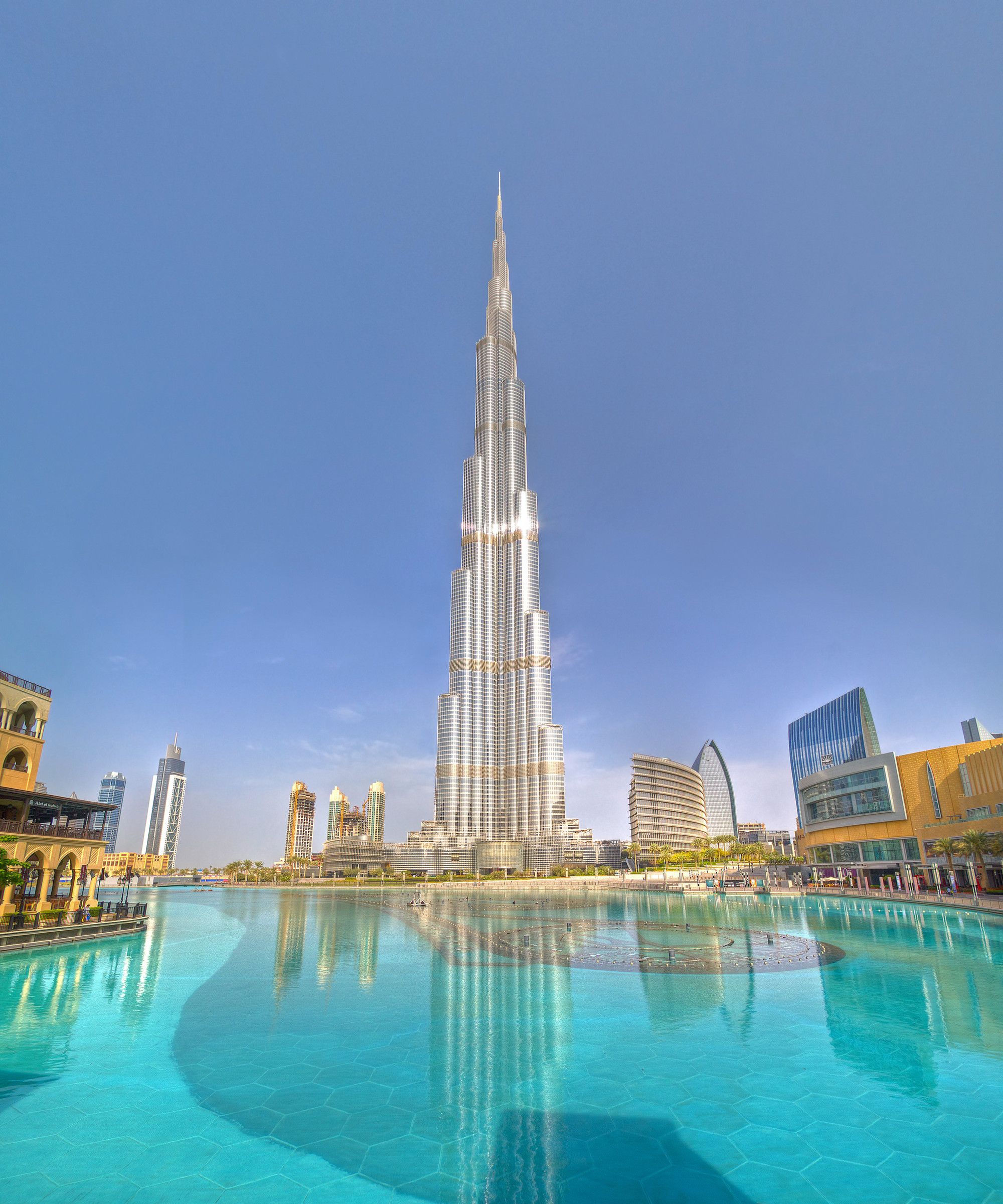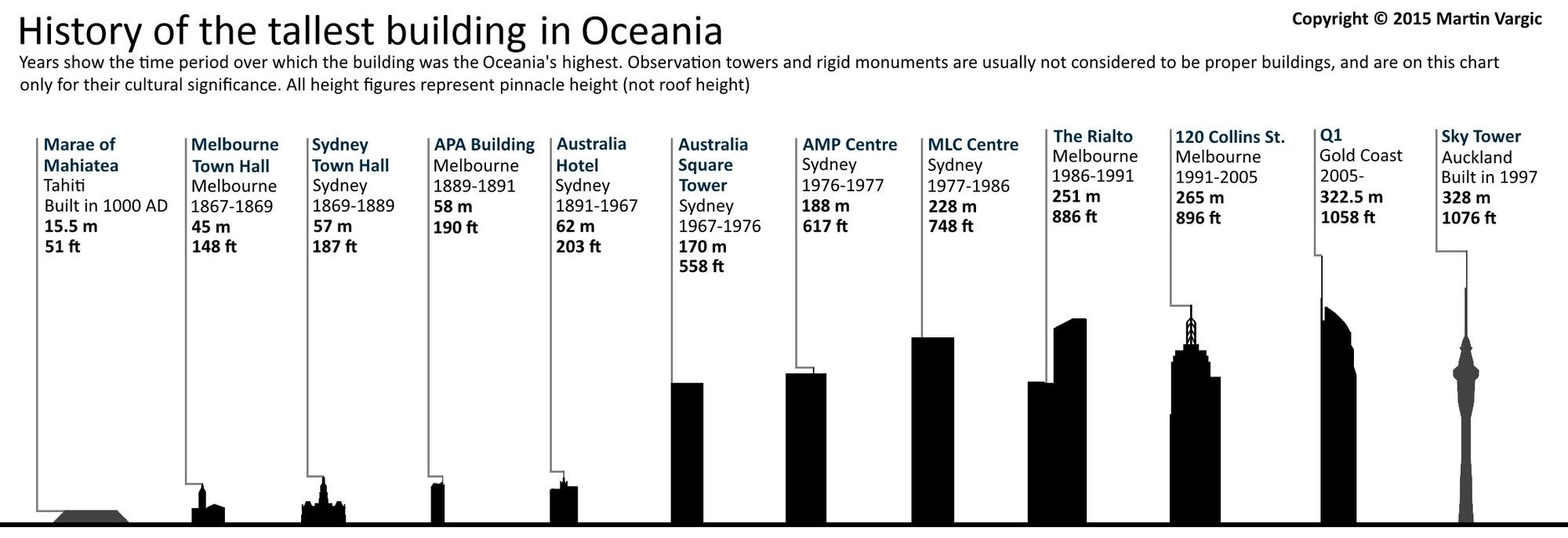“Halcyonmaps.com”, a place solely dedicated to maps and charts of kinds that entertain you, bemuse you and strike a chord in your mind with its useful and concise information, is definitely a website to be added to any knowledge-buff’s inventory.
Martin Vargic, the Slovak author, alternatively an artist and an entrepreneur, is the master of such depictions. Famed for his ‘Map of the Internet’, and the book, ‘Vargic’s Miscellany of Curious Maps’, he recently published on his website, the charted versions of the ‘Tallest Planned Buildings’ throughout history.
There are in total six info-graphics, charting each continent separately, namely, Europe, North America, Asia, Africa, South America and Oceania. Dating back as far as 2650 B.C., the charts give out information like the name, shape, height, the year in which the building was built, and, the time it was the tallest in the continent. By means of silhouettes of the buildings documented, he has represented from the left to the right the buildings in order from the oldest to the newest.
Furthermore, the buildings colored in red present the category wherein the buildings have held the record of being the highest by pinnacle at least once.
He does not however, specifically center around the buildings that have had the status of being the tallest. Indeed, Vargic engages the buildings which were once in the race of being the tallest. Some of the buildings featured in the maps are yet to be built in the future; some will simply remain in paper as their plans have been cancelled due to lack of funding.
Looking at the charts, it is clear that most of the world’s tallest buildings were in Europe, North America and then, Asia. The lighthouse of Alexandria, dating back to 280 B.C., makes an exception by being the sole building to appear on the list of Africa, that has been at one time the tallest of all.
Often called the Pharos of Alexandria, it was around 130 meters high. Built by the Ptolemaic Kingdom, it was one of the tallest building for many centuries to come, and now, one of the seven wonders of the ancient world.
The tallest skyscrapers to be completed in the world by 2015 can be seen here. The current tallest tower is Burj Khalifa, in Dubai, as the majority of us are well aware. Highlighting Asia among others, the Burj Tower is a mixed-use development touching the sky and challenging its limits at 828 meters from Ground Level.
North America has at the top, the One World Trade center, New York, when talking in terms of the highest occupied floor, but it loses to the CN Tower, Toronto, at the very tip of the spire, at 541 meters and 553 meters respectively. There are several ways in which the height of a building is measured. According to CTBUH, that is, the Council of Tall Buildings and Urban Habitat, there are three categories, namely: the height to the Architectural top, the height to the highest occupied floor and the height to the tip.
The Federation Tower, Moscow has the honor of gracing the very end of Europe’s charted documentation. At a height of 373.7 meters, it is at current, the highest tower in Europe, when measured to the pinnacle, otherwise, it would be next in line after the Mercury City Tower, Moscow at 339 meters. The Eiffel Tower has also been included in the chart although it is not a proper building, for its cultural significance, as Vargic mentions in his depiction.
For Africa, and Oceania, the tallest buildings at present are the Sentech Tower, Johannesburg at 237meters by tip of the building and the Gran Torre Santiago, Santiago at 300 meters, respectively.
These charts when looked at closely, take us on a guided tour through the economic history of the world, following the red silhouettes. At any time in history, we see the economic status of a continent and how time took a shift when skyscrapers started to emerge in all parts of the world. For instance, we know when America took over from Europe (20th century) and when Asia came in the limelight (Burj Dubai).
Vargic’s info-graphics not only make it feasible to explore the tallest buildings of the world at a glance, but provide useful basis of knowledge for various kinds of comparisons. In our fast-paced lives today, we often use charts and maps to explain in precise and concise terms. Martin provides perhaps one of the best documented charts and maps to be found. His work is an explorer’s delight and an adventurer’s fantasy, helping them discover the world through a different lens often encompassing ages of history.











